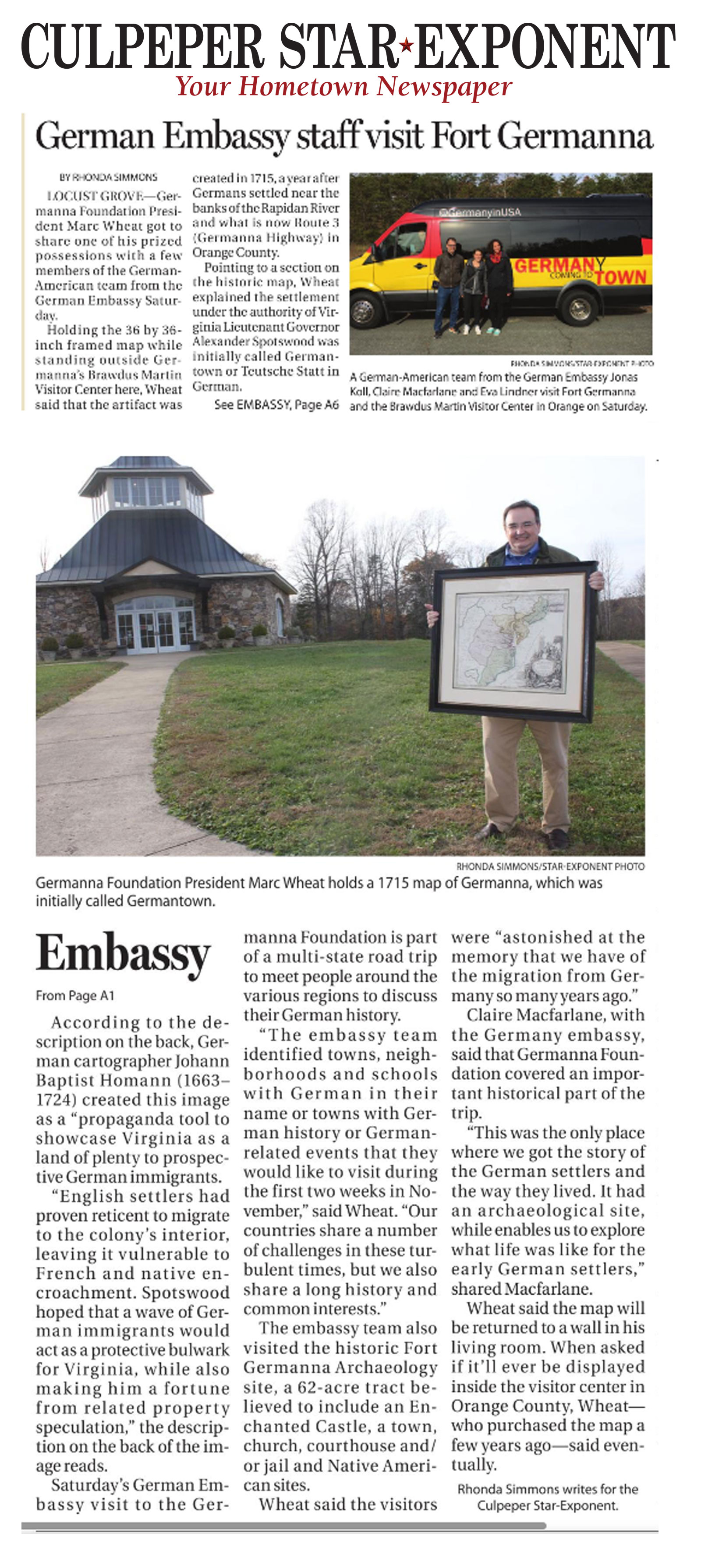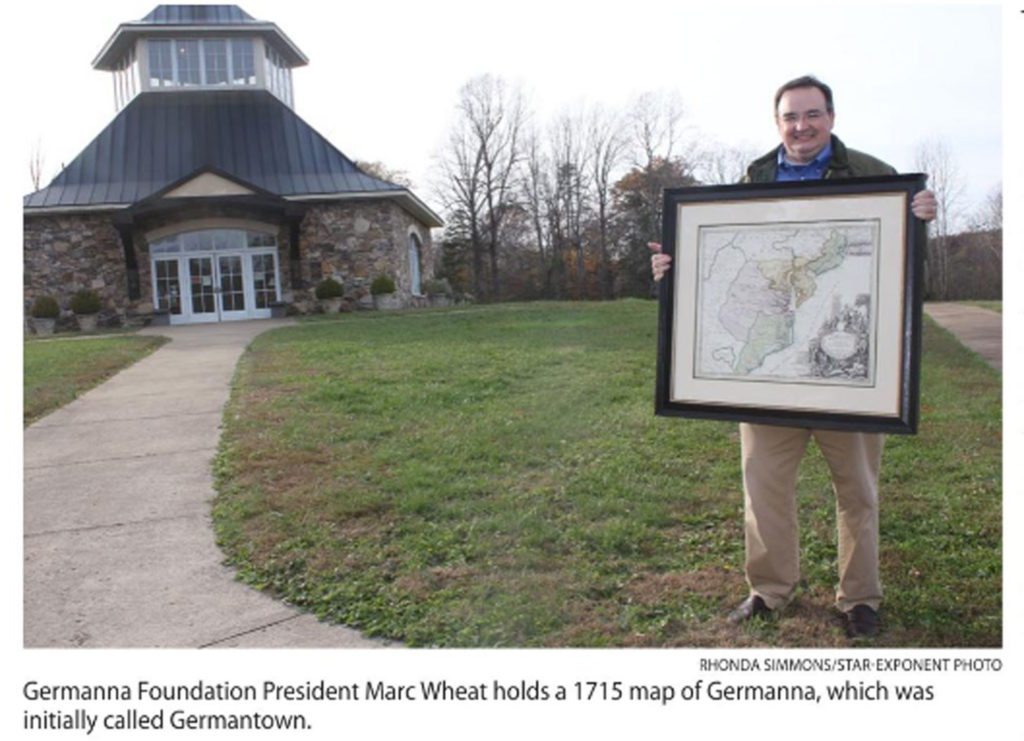 The Culpeper Star-Exponent ran a front-page story on the German Embassy’s visit to Germanna on Saturday, November 11, 2017:
The Culpeper Star-Exponent ran a front-page story on the German Embassy’s visit to Germanna on Saturday, November 11, 2017:
Germanna Foundation President Marc Wheat got to share one of his prized possessions with a few members of the German-American team from the German Embassy Saturday.
Holding the 36 by 36-inch framed map while standing outside Germanna’s Brawdus Martin Visitor Center here, Wheat said that the artifact was created in 1715, a year after the Germans settled near the banks of the Rapidan River and what is now Route 3 (Germanna Highway) in Orange County.
Pointing to a section on the historic map, Wheat explained the settlement under the authority of Virginia Lieutenant Governor Alexander Spotswood was initially called Germantown or Teutsche Statt in German.
According to the description on the back, German cartographer Johann Baptist Homann (1663- 1724) created this image as a ”propaganda tool to showcase Virginia as a land of plenty to prospective German immigrants.”
“English settlers had proven reticent to migrate to the colony’s interior, leaving it vulnerable to French and native encroachment. Spotswood hoped that a wave of German immigrants would act as a protective bulwark for Virginia. while also making him a fortune from related property speculation,” the description on the back of the image reads.
Saturday’s German Embassy visit to the Germanna Foundation is part of a multi-state road trip to meet people around the various regions to discuss their German history.
“The embassy team identified towns, neighborhoods and schools with German in their name or towns with German history or German-related events that they would like to visit during the first two weeks in November,” said Wheat. “Our countries share a number of challenges in these turbulent times, but we also share a long history and common interests.”
The embassy team also visited the historic Fort Germanna Archaeology site, a 62-acre tract believed to include an Enchanted Castle, a town, church, courthouse and/ or jail and Native American sites.
Wheat said the visitors were “astonished at the memory that we have of the migration from Germany so many years ago.”
Claire Macfarlane, with the Germany embassy, said that Germanna Foundation covered an important historical part of the trip.
“This was the only place where we got the story of the German settlers and the way they lived. It had an archaeological site, while enables us to explore what life was like for the early German settlers,” shared Macfarlane.
Wheat said the map will be returned to a wall in his living room. When asked if it’ll ever be displayed inside the visitor center in Orange County, Wheat–who purchased the map a few years ago–said eventually.
Article by by Rhonda Simmons, Star-Exponent

